Aerobic exercises
Table of Contents
What are Aerobic exercises?
Difference between Aerobic exercise and Anaerobic exercise:
Types of Aerobic Exercise and How to Get Begun?
How does the body respond to Aerobic exercise?
Benefits of Aerobic exercises:
It is recommended that a person have to talk with a physician before starting an exercise program. Ask about any restrictions you might have. Additional safety guidelines for exercise may be required by individuals with diabetes, hypertension, heart disease, arthritis, pulmonary conditions, or other health conditions.
Among the identified health benefits of doing regular aerobic exercise are:
- Strengthens the muscles concerned with respiration, to facilitate the flow of air in and out of the lungs
- Fortifies and augments the heart muscle, to further develop its siphoning productivity and lessen the resting pulse, known as vigorous molding
- Enhances circulation efficiency and decreases blood pressure
- Improves pain tolerance
- Maintains independence in later life
- Raises the total number of red blood cells in the body, facilitating the transport of oxygen
- Improves mental health, including reducing stress and lowering the incidence of depression, as well as increasing cognitive capacity.
- If aerobic exercise is used as an additional treatment for patients with a hematological malignancy, it may also result in a slight reduction in depression.
- Lessens the risk of diabetes
- Moderates the chance of death due to cardiovascular problems
- Decreases the risk of heart disease, blood clots, and stroke
- Reduces total cholesterol
- Increases high-density lipoprotein
- Encourages weight loss
- Stops bone loss
- Reduces inflammation
- Prevents vascular dysfunction
- Enhances Episodic memory
- Improves cardiovascular conditioning.
- Decreases risk of heart disease.
- Lowers blood pressure.
- Increases HDL or “good” cholesterol.
- Helps to better manage blood sugar.
- Assists in weight management and/or weight loss.
- Improves lung function.
- Decreases resting heart rate.
- Exercise safety
High-impact aerobic activities (including jogging or using a skipping rope) can:
- Stimulate bone growth
- Lessen the risk of osteoporosis for both men and women
Disadvantages of Aerobic exercises:
Some drawbacks of aerobic exercise have:
- Overuse injuries because of repetitive, high-impact exercise such as long-distance running
- Not an effective form of fat loss. Beginners may experience a fast fat-loss process but professional practitioners will combine scientific diets and anaerobic exercise to get the ideal result
- Aerobic exercise may not be as efficient as other exercise methods for evoking the same improvements in body composition, cardiovascular health, and overall health. For example, HIIT exercise has been shown to provide the same benefits in a fraction of the time spent exercising per week.
- Both the health benefits and the performance benefits, or “training effect”, demand that the duration and the frequency of exercise both overreach a certain minimum. The majority of experts recommend exercising for at least twenty minutes three times per week.
Some examples of Aerobic exercises
Lower-impact aerobic exercise possesses:
- Swimming
- Cycling
- Using an elliptical trainer
- Walking
- Rowing
- To exercise, use an upper body ergometer, a piece of equipment that only works the upper body and provides a cardiovascular workout.
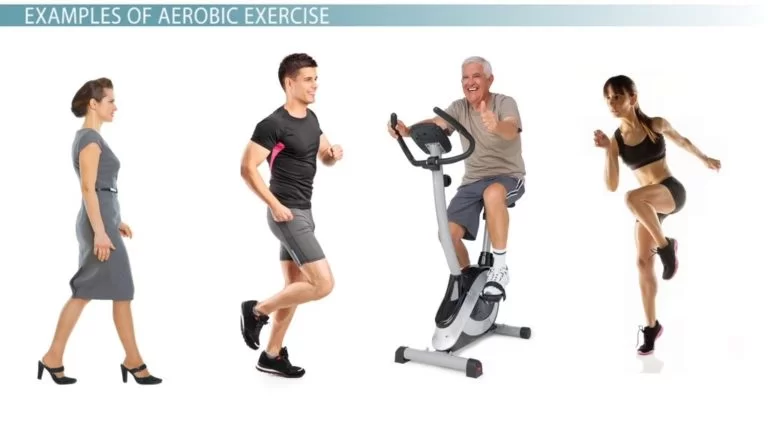
The higher-impact aerobic exercise contains:
- Running
- Jumping rope
- Performing high-impact routines or step aerobics.
For how long should I do these exercises?
The American Heart Affiliation suggests that everybody arrive at least 30 minutes of a type of cardiovascular activity 5 to 7 days a week. This can be divided up into breaks of ten minutes. This indicates that if we took three 10-minute walks, we would achieve the minimum amount of exercise that is recommended to lower our risk of heart disease, diabetes, high cholesterol, and hypertension. In addition, a person would burn the same number of calories if they walked for the entire 30 minutes at once.
To help with weight management and improve cardio-respiratory fitness, the American College of Sports Medicine recommends that at least three 30-minute sessions be spent doing moderate to vigorous exercise.
It is right to do aerobic exercise every day. There is no need to rest in between sessions unless the person is at an extreme level of training, such as preparing for a marathon, or if they experience reoccurring joint pain. If joint pain is a limiting factor, it might be best to alternate exercises that are less painful with ones that could cause joint pain or to stop doing the painful exercise altogether.
Explanation of intensity:
The intensity is determined by how hard they are working. The intensity of the exercise is determined by what the goals are, what limitations they have, and the current fitness level.
Heart rate and exercise:
The heart rate rises in direct correlation with the intensity of the exercise. Depending on fitness level, genetics, environment, and exercise tolerance, heart rate levels can vary significantly from person to person. If they wish to train based on heart rate, contact the healthcare provider to determine what the appropriate range is for the person. Some medications, most frequently blood pressure drugs, regulate heart rate, making it inconceivable to determine exercise intensity in this way. Ask the doctor to determine if a person is on any of these medications.
Monitoring intensity in other ways:
How might you be aware assuming you are working at the right intensity?
Using an RPE (Rate of Perceived Exertion) chart can help the person to determine the appropriate intensity. The scale utilizes a 1 to 10 rating system. 1 number in the scale is very light, such as roaming to the refrigerator for a glass of milk. 10 number on the scale would be a very important level, representing maximal exercise. Ten would be demonstrative of not being able to take another step without fear of failure. It is not advised for anyone to work at a rate of 10 without rigorous supervision by a doctor Average intensity is the level of exercise that is most recommended, and can be specified by a rating between a 3 and a 5.
Warming up and cooling down:
Every session of aerobic exercise should have a warm-up and cool-down. The warm-up period should not possess static stretching, but should instead be an incremental increase in the pace and intensity of the exercise. This permits the body to facilitate blood flow to the muscles and lessens the likelihood of a muscle or joint injury. The warm-up should stay between 5 and 10 minutes. The cool-down meeting ought to last a tantamount measure of time as the warm-up, with the speed gradually declining
Stretching exercises would be right after aerobic exercise.
Progression of aerobic exercise:
Individual exercise tolerance should determine progression to higher exercise intensities. There are three ways to test your aerobic fitness:
- Increase speed.
- Increase the resistance.
- Increase the duration.
Any of these strategies, or a mix of these techniques, will work on oxygen-consuming wellness. It should be done very slowly to enhance intensity. A person ought to challenge for a couple of moments all at once.
How to calculate the target heart rate during Aerobic exercise?
Heart rate reserve:
The heart rate rises during aerobic exercise. It can increase from 70 beats per minute (bpm) at rest to as high as 170 bpm or even more increased during exercise, depending on the intensity of the exercise, fitness level, age, and other factors. Whether the training is aerobic or anaerobic is specified by the intensity of the workout, and monitoring the intensity is the key to understanding which one you’re doing.
For a lot of people, just keeping an eye on how their body feels while they exercise is enough to figure out the right aerobic intensity. It recommends “warm and slightly out of breath” as the cue for aerobic activity; that is if a person feels warm and slightly out of breath while exercising, then that’s good enough.
On the other hand, many people like to know with more accuracy how their body is doing during exercise. If that is the case for a person, then taking the heart rate during exercise and using a target heart rate training zone might be just the access.
- Target heart rate zones range anywhere from 50% to 100% of your maximum heart rate (your maximum heart rate is based on your age).
- Aerobic exercise is anything smaller than 85%, and anaerobic exercise is anything beyond that.
- A decent beginning stage for a dormant individual is someplace in the scope of the half to 65% (an individual can constantly increment as they get fitter) and 65% to 85% for individuals who are in better condition.
I suggest the heart-rate reserve process for calculating a target heart rate. Here are the formula and an example of the method for someone 26 years of age, assuming a resting heart rate of 70 bpm, and a training range of 70%.
Here is the heart rate reserve formula:
- Max HR = 220 – Age
- Heart Rate Reserve (HRR) is equal to Max HR – resting heart rate
- Training Heart Rate is equal to HRR x percent at which a person wants to train
- Target Heart Rate = Training Heart Rate + resting heart rate
Considering a resting heart rate of 70 bpm, 26 years old, and 70% training range:
- Max HR: 220 – 26 = 194
- Heart Rate Reserve (HRR): 194 – 70 = 124
- Training Heart Rate: 124 x .70% = 86.8
- Target Heart Rate: 86.8 + 70 = 156.8
So this 27-year-old exerciser will try to hold a target heart rate of 156.8 beats per minute while doing exercise.
Note: There is been a recent study to suggest a new way of calculating maximum heart rate. The formula is the following:
- Multiply 0.7 times your age.
- Subtract that number from 208.
An example if a person is an age of 26 years old is: 0.7 x 26 = 18, then the Max HR is 208 – 18 = 190. A person had then taken the Max HR of 190 and plugged it in as usual to the formula above. This new formula makes a little bigger difference as a person get older.
Aerobic exercise at home:
Cardiovascular exercises can be done at home. There are many exercises that a person can do with little to no equipment, too. Forever warm up for 5 to 10 minutes before starting any exercise. Following are some exercises which can do at home:
- Jump rope
- Aerobic strength circuit: squats, lunges, pushups, triceps dips. torso twist
- Running or jogging
- Walking
- Swimming
- Kickboxing
- Stationary bike
- Zumba
- Indoor cycling
Keep some equipment like gym shoes, rope, stationary bike, etc.
Do exercise 20-30 minutes 2-3 times a week.
Aerobic Exercise Video
Summary:
By performing these exercises regularly, a person should begin to notice improvements in their cardiovascular endurance. Make sure the exercise plan includes both aerobic and anaerobic activities.
Get a bunch of rest, remain hydrated, and try to rehearse these exercises for at least 150 minutes each week.
Talk with the doctor before starting any new exercise program. This is especially important if a person has any medical conditions or takes any medications.
FAQs
Is aerobics better than the gym?
The aerobic exercise group lost weight despite spending less time training, as the researchers discovered that aerobic exercise is a more effective way to lose body fat. On the other hand, the resistance-training group trained longer but did not lose any weight
What is the best aerobic exercise?
Walking. Walking is one of the easiest and most available aerobic exercises.
Cycling. Cycling is another type of aerobic exercise with broad request and value.
Ski Machines, Stair Climbers, Steppers, Ellipticals.
Swimming Activities.
Jogging, Aerobic Dance.Does aerobic exercise burn fat?
The best kind of exercise for losing weight is aerobic exercise because it causes the muscles to burn both glucose and fat. However, the exercise needs to last longer than a few minutes for fat-burning to kick in.
Can you do aerobics every day?
The more the person does exercise, the more calories he will burn. If a person is trying to lose weight, they should aim for doing cardio at least five days per week for a total of at least 250 minutes (4 hours, 10 minutes) per week. Aerobic exercise can be done seven days a week, despite popular belief.
Is yoga an aerobic exercise?
No. Yoga is not aerobic exercise, despite the fact that power yoga and other more athletic forms of yoga make you sweat. Even though yoga is not aerobic exercise, some research shows that it can be just as beneficial for health improvement as aerobic exercise.


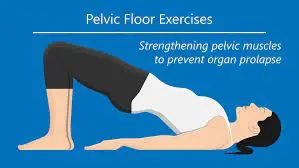
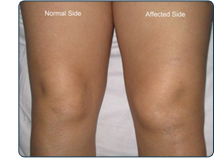
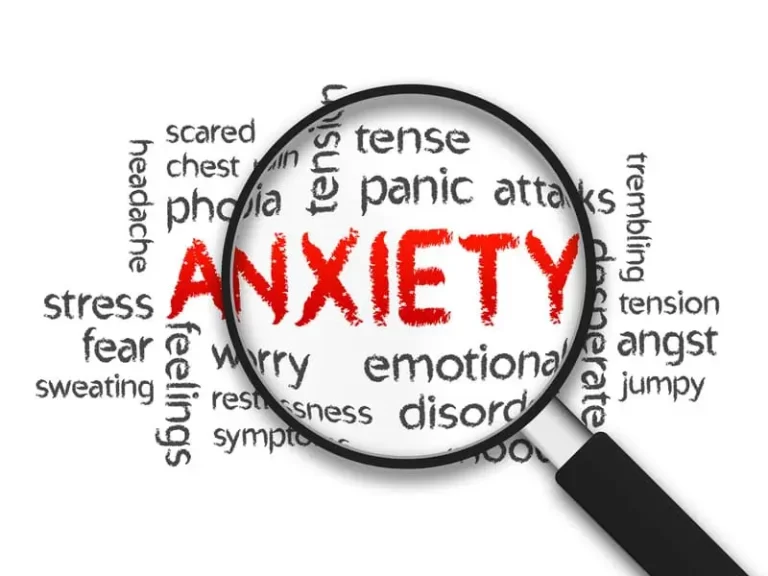


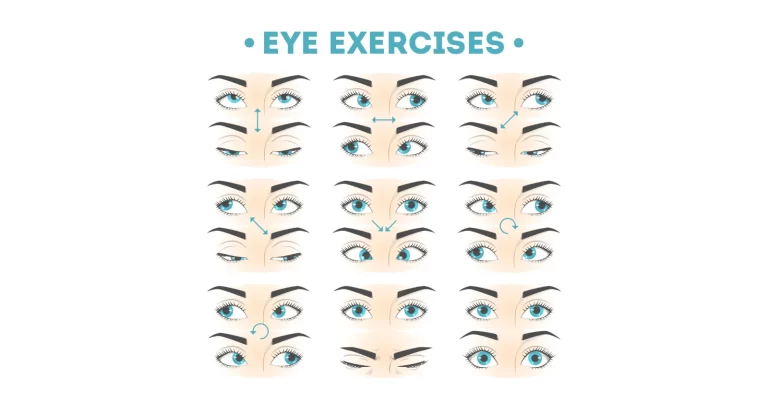
22 Comments